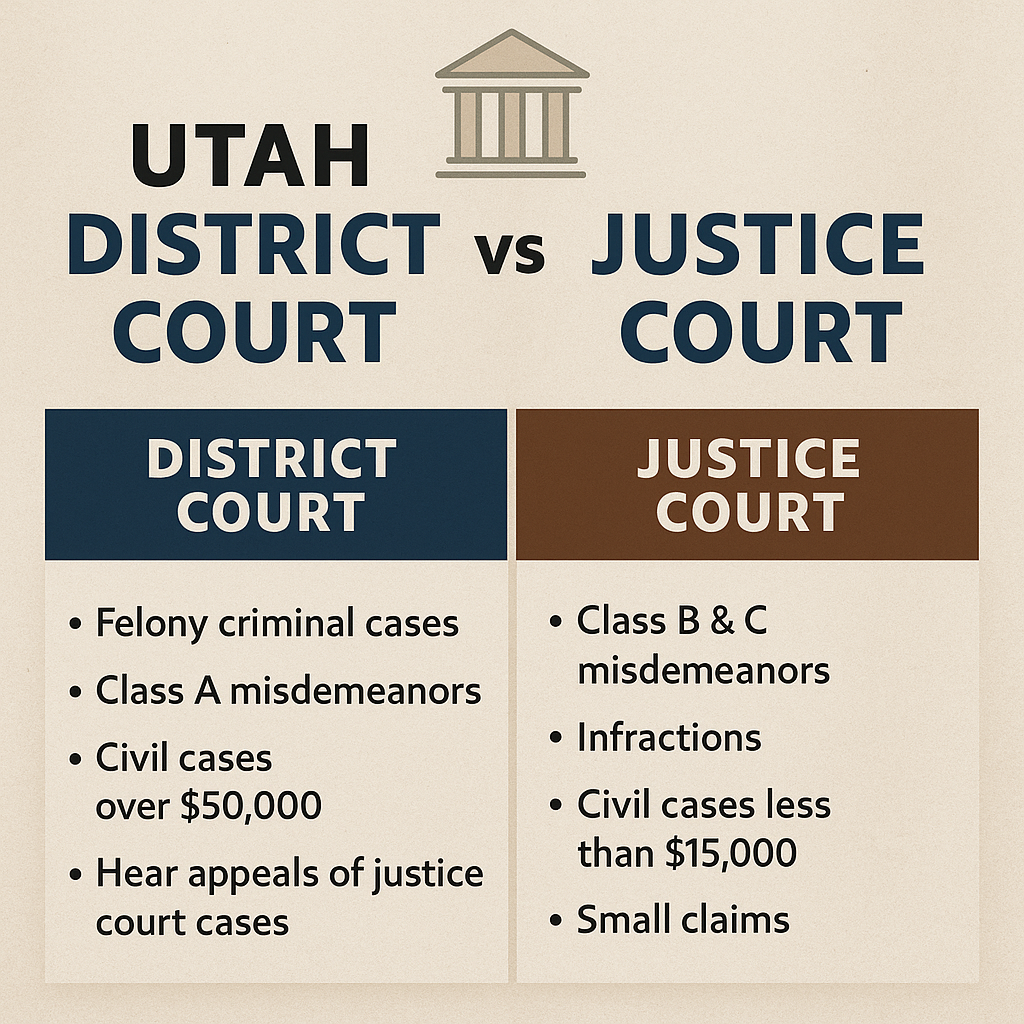What Is The Difference Between Utah District Court and Justice Court?
File in the right place the first time – jurisdictions, limits, transfers, and appeals
Short answer: Utah’s District Courts and Justice Courts handle very different work. Filing in the wrong court can waste time, money, or even get your case dismissed.
District Court is Utah’s main trial court for serious criminal, larger civil, family, and probate matters. Justice Court is a city or county level court for lower level misdemeanors, traffic, and smaller civil disputes.
This guide shows what each court covers, the dollar limits, how cases move between them, and how appeals work so you can pick the proper venue with confidence.
What Utah District Court Handles
Utah’s District Courts are general jurisdiction trial courts. Every county has at least one location. Judges are state appointed and follow the Utah Rules of Civil and Criminal Procedure.
- Felonies and serious misdemeanors
- Civil lawsuits over $15,000
- Family law – divorce, custody, protective orders
- Probate and estate cases
- Juvenile appeals and injunctions
Appeals from District Court go to the Utah Court of Appeals or the Utah Supreme Court depending on the issue.
What Utah Justice Court Handles
Justice Courts are created by cities or counties. Proceedings are more informal and focus on efficient resolution. Many people appear without a lawyer.
- Class B and Class C misdemeanors
- Infractions and traffic violations
- Small civil disputes up to $15,000 (similar to small claims scope)
If you have a speeding ticket, a landlord tenant small claim, or a minor shoplifting charge, you will likely be in Justice Court.
District Court vs Justice Court – Side by Side
District Court
Justice Court
Case Transfers Between Courts
Cases that exceed Justice Court authority must be transferred to District Court. Examples include civil claims over $15,000 or a charge that is more serious than the court can hear.
Appeals from Justice Court are heard in District Court as a trial de novo – a fresh start, not just error review. Always confirm limits with the clerk before filing.
Appeals Overview
Video & Social Learning Hub
Key Takeaways
District Court handles serious criminal, larger civil, family, and probate. Justice Court handles lower level misdemeanors, traffic, and civil up to $15,000.
Justice Court appeals go to District Court for a brand new trial. District Court appeals go to higher appellate courts.
Confirm limits with the clerk before filing to avoid a transfer or dismissal.
This page provides legal information, not legal advice. When in doubt, get counsel before you file or appeal.
Need Help Picking the Right Court?
Utah Law Explained has plain English guides, checklists, and local links to help you file correctly or respond on time.
Explore More GuidesUse our checklists or speak with a Utah attorney for advice tailored to your situation.
